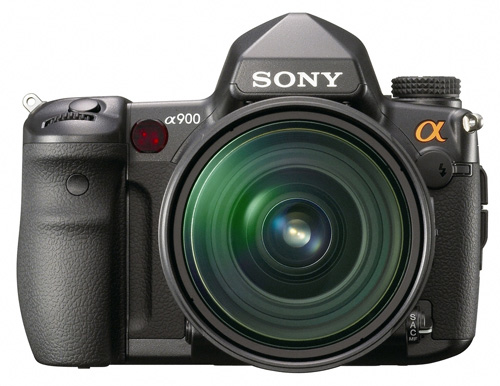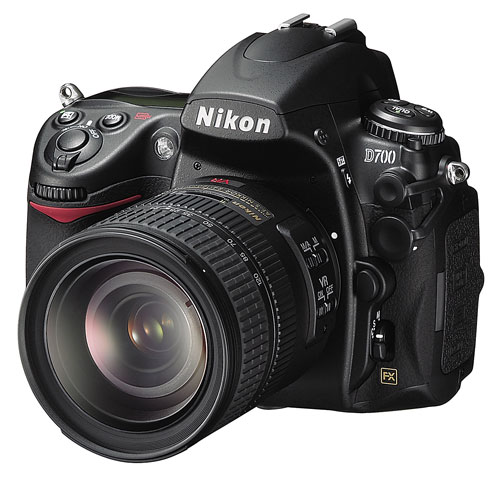Sony A900: A Closer Look at 24.6MP Resolution and Noise
by Wesley Fink on October 27, 2008 2:00 AM EST- Posted in
- Digital Camera
When we published the Sony A900 Full-Frame: Hands-On Preview several weeks ago, the excitement about the world's highest resolution full-frame DSLR was evident in every photography forum you could find on the web. It was not as if the new Sony flagship model was a surprise, because the specifications had been detailed in broad strokes in the year since Sony announced the development of a 24.6MP 24x36mm full-frame sensor. The launch just filled in the blanks with details and answered questions like whether Sony could get their body Image Stabilization to work on a full-frame. The answer was yes they could.
Just as quickly everyone began wondering whether that huge 24.6MP sensor would be any good at low-light high ISO photography, which had risen to the full-frame forefront with the Nikon D3 and D700. The Nikon's are half the 24.6 MP resolution, but with a standard range to ISO 6400 and extensions to a staggering 25600. Everyone wondered whether the Sony A900 could compete with Nikon's full-frame, designed for "available darkness" as some liked to tease.

Fortunately, it was not a long wait until we could buy a Sony A900, and with a production model in hand some of the questions can begin to be explored. It has already been clearly established in every review that the Sony A900 is the highest resolution full-frame that you can buy - even out-resolving the $8000 Canon 1DS Mark III with a 21.6MP sensor. That resolution performance is amazing when you consider the 24.6MP Sony A900 is just $3000, and it gives studio photographers a new choice - since they normally work in the A900 sweet range, which is broadly acknowledged to be ISO 100-800.

What is not as clear is how suitable the Sony A900 is for action photographers. The A900 features dual Sony BIONZ processors and it features a real 5 FPS speed, which most consider remarkably fast for a full-frame DSLR with 24.6MP resolution. The A900 also features the first body-integrated IS system in a full-frame camera. Sony SteadyShot is said to be capable of improving hand-held shooting by 2 to 4 stops depending on the lens. Most important is that SteadyShot is available and works with any lens that you mount on the Sony A900. This is particularly important in very large aperture lenses, which are often prohibitively expensive for optical OS since such huge elements have to be compensated.
With 5 FPS burst speed and always available IS, the A900 on the surface appears a good choice for action and sports. However, a sensor that is too noisy at high ISO could limit the usefulness of the A900 in action shooting.


That is the reason for these tests - to look more closely at noise of the A900 sensor. Noise will be compared to the Nikon D700 and Canon 5D, which are the only full-frame DSLRs you can currently buy other than the A900. Canon has announced the 5D Mark II but that camera is not yet shipping and is not expected in the market until late November.

With the announcement of the A900 Sony also announced an update to firmware Version 4 for the 12.3MP Sony A700 that incorporates all they learned in developing the A900. Our final noise comparison will be the Sony A700 to the full-frame A900.










45 Comments
View All Comments
Heidfirst - Wednesday, October 29, 2008 - link
Wesley has already said that these are out of the camera jpegs at default settings & every manufacturer has different values for settings even if they may use the same names for them.If you want sharper out of the camera JPEGs then simply set more sharpness.
Or as a semi-pro you'll probably be using RAW & you'll be used to having to sharpen in pp anyway.
jamesbond007 - Thursday, October 30, 2008 - link
RAW images, which typically have zero sharpening (or any in-camera adjustments made) are sharper than the images provided.TariqGibran - Wednesday, October 29, 2008 - link
Your statement:"Sony sensor is double the resolution of competing full-frame cameras"
is technically incorrect. You also made this same statement in your initial review of the a900. In order to double the resolution, one must quadruple the megapixels, not just double them.
Wesley Fink - Wednesday, October 29, 2008 - link
You are talking about doubling the SIZE of the sensor, which is, as you point out, four times the resolution. Most readers would consider 12 MP double the resolution of a 6 MP sensor. I therefore stand by my description that the A900 at 24.6 megapixels doubles the resolution of the 12 megapixel full-frame competitors.sxr7171 - Monday, November 3, 2008 - link
I think that's a misconception that you should not perpetuate. It is the responsibility of the educated reviewer to inform people about linear resolution. That is the only number that truly speaks about how large you can print the image at a given DPI. Sure you could make the argument that twice the pixels is twice the detail and I wouldn't object but the ability to resolve two different points on either axis is a product of linear resolution. Please don't perpetuate the megapixel myth people are already clueless about the true meaning of the megapixel count and while the 24.8MP is nice for well lit, low action studio type shots most people really need something to shoot action with and talking about increased detail of 24MP vs 12 MP is something that is not important unless you want to shoot to make posters.TariqGibran - Wednesday, October 29, 2008 - link
You are incorrect. Look it up. You are only doubling the MP, not the linear resolution which is what we look at when we speak of resolution in regards to a digital sensor in this context. This is basic stuff any reviewer should be aware of and its sort of an embarrassment to the site and review that you do not know this. No knowledgeable reviewer would claim that 24MP gives double the resolution of 12MP. The fact that you stand by this inaccuracy is even more troublesome. Do some research.Wesley Fink - Wednesday, October 29, 2008 - link
I did try to look up your claim when you first made it in your comments to the A900 preview. I found nothing that corroborated your claim. We tried to look up your CLEAR definition of double resolution as 4 times the number of pixels again and found nothing to indicate that.It is not that we doubt you, but without any references to substantiate what you say it is not reasonable to make changes. If you have the "proof" you say is so easy to find please send us some links and we will take a look.
The 24.6 megapixel A900 does have twice as many pixels as the Nikon D3/D700 and Canon 5D.
melgross - Thursday, October 30, 2008 - link
Doubling the number of pixels increases the resolution by 39% (approx), but doubles the pixel DENSITY.This isn't in question.
lsman - Tuesday, October 28, 2008 - link
On first page,That resolution performance is amazing when you consider the 24.6MP Sony A700 is just $3000
You meant A900 is just $3000
Wesley Fink - Tuesday, October 28, 2008 - link
Thanks for bringing this to our attention. Now corrected.